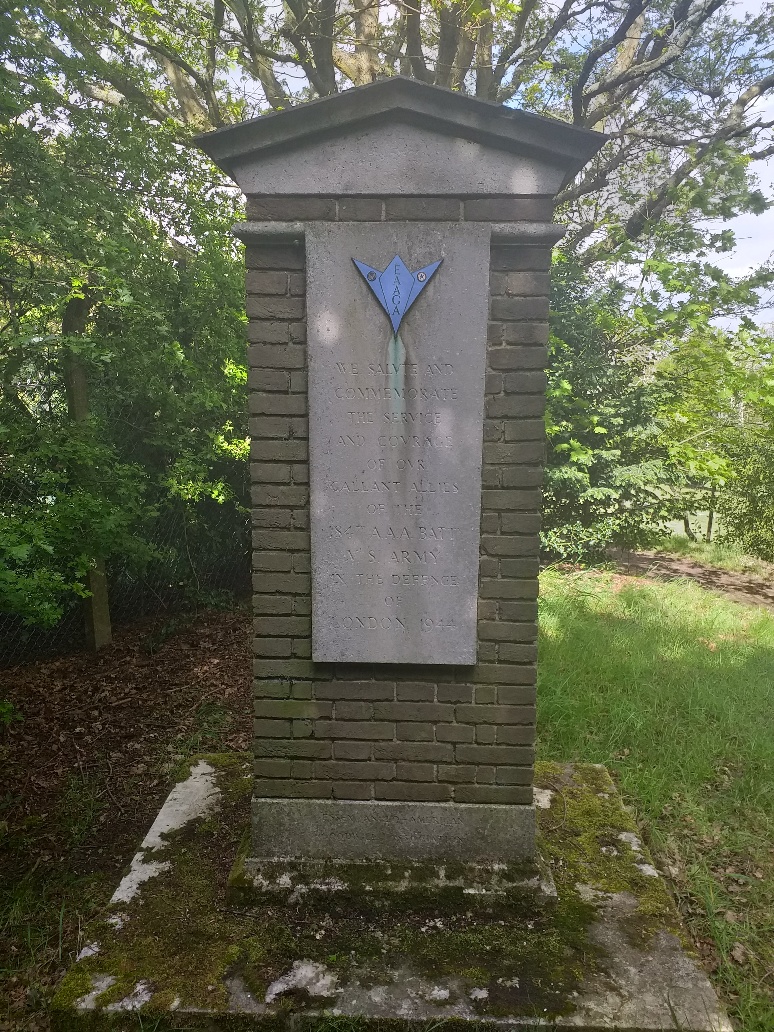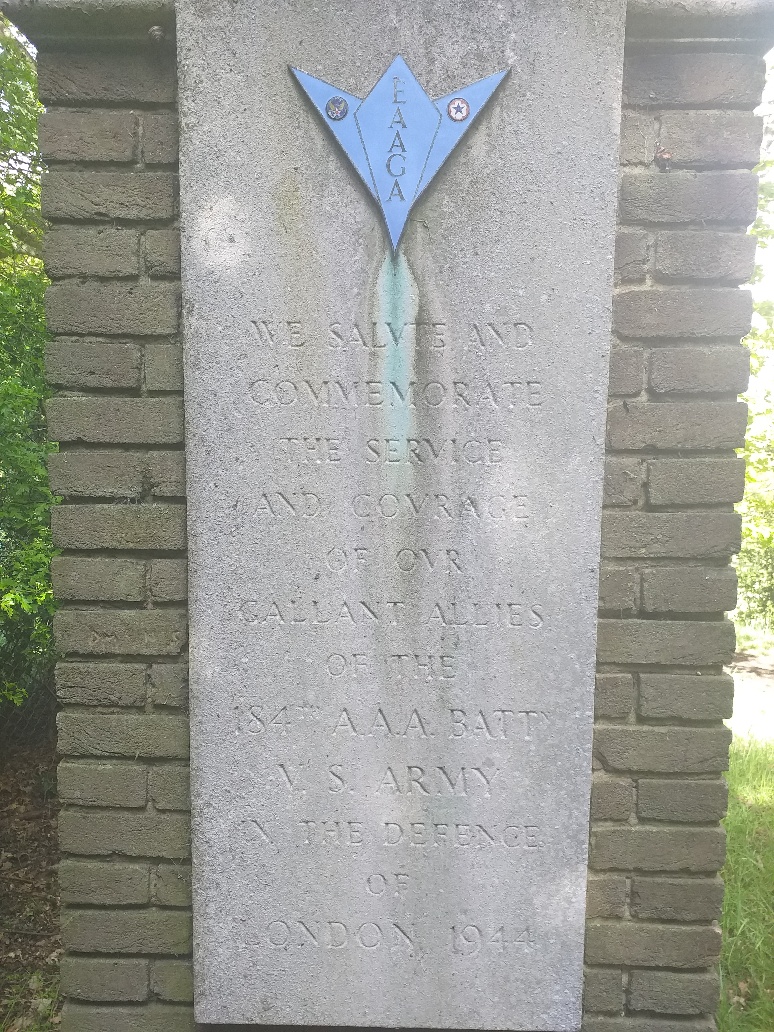184th AAA Monument
Details:
On the west side of the Police Training Camp,
near a tank vehicle. It is in an indent in the line of the fence around the
police establishment. A footpath to the monument is accessible to the public.
A brick tower, with bricks laid in Flemish bond, square in plan, with a moulded stone base, on a concrete plinth, a drip mould and pedimented cap. Attached to the north-east face is a concrete plaque with the EAAGA blue arrow-shaped symbol followed by the commemoration message.
Until just before the Second World War the site of Lippitts Hill, currently a Police Training Camp, was a rural setting of open fields bordered by the Owl public house and Pipers Farm on the east side. By January 1940 a Heavy Anti-Aircraft battery known as ZE7 Lippitts Hill had been constructed to guard the eastern approaches of London. War Office documents record that the battery was operational in January 1940, and by January 1943 the battery was manned by American troops under the command of Major M. F. J. Emanuel. In March 1944 Battery B, 184th Anti-Aircraft Artillery, equipped with Mark 1, 90mm guns, became the first American crew to fire in the defence of London.
In late 1944, the Americans moved to France and the site was converted by the British into a Prisoner of War camp. A reminder of this phase of use still exists on site today in the form of a concrete sculpture of a man carved by prisoner Rudi Weber in 1946 (NHLE 1390665). The Prisoner of War camp was closed in 1948. Sometime in 1951, or shortly afterwards, a Cold War Anti-Aircraft Operation Room (AAOR) was built on the site. It acted as a control centre for a number of anti-aircraft guns protecting the north of London. By 1956, with the advent of high flying jet bombers and evolving missile technology this role was obsolete and the system was abandoned. In 1960, the site became a Metropolitan Police Training Area, a function retained until 2003. Following the murder of three police officers in West London in 1966, it was used as a centre for training police officers in the use of guns, although the construction of a new pistol firing range was not approved until 1973. From 1976 Lippitts Hill became a base for police helicopters, which were loaned from the Army and operated over London. However, in 1980, faced by a change in flight requirements, the Metropolitan Police purchased their own aircraft, and in November that year the Metropolitan Police Air Support Unit was officially launched and based at Lippitts Hill. Changes to the Metropolitan Police area in 2000 placed Lippitts Hill, and the surrounding area under Essex Police. The helicopter unit joined the National Police Air Service (NPAS) in 2014.
The monument dedicated to US servicemen who served at the camp was erected in 1948 by the Essex Anglo-American Goodwill Association and is currently maintained by idverde UK Limited Company.
Source of information: historicengland.org.uk, www.heritagegateway.org.uk
Monument Text:
WE SALUTE AND
COMMEMORATE
THE SERVICE
AND COURAGE
OF OUR
GALLANT ALLIES
OF THE
184TH A.A.A. BATTN
U.S. ARMY
IN THE DEFENCE
OF
LONDON 1944
On the plinth:
ESSEX ANGLO - AMERICAN GOODWILL ASSOCIATION


